Jacksonville, Fl. — The “Buresh Bottom Line”: Always be prepared!.....First Alert Hurricane Survival Guide... City of Jacksonville Preparedness Guide... Georgia Hurricane Guide.
STAY INFORMED: Get the * FREE * First Alert Weather app
FREE NEWS UPDATES, ALERTS: Action News Jax app for Apple | For Android
WATCH “Talking & Tracking the Tropics: The Science Behind the Season”
WATCH “Preparing for the Storm”
READ the First Alert Hurricane Center “Survival Guide”
***** ALWAYS CHECK & RE-CHECK THE LATEST FORECAST & UPDATES! *****
*** The most significant impacts from Eta have occurred for Florida but strong flow off the Atlantic (from the east/southeast) will continue to help produce bands of heavy rain ***
FOR JACKSONVILLE/NE FL./SE GA:
** gusty winds peaked through Monday evening & will remain breezy but not as strong through midweek averaging 15-20 mph with gusts to 25 mph. Occasional shower bands will potentially produce gusts of 30-40 mph.
** dangerous rip currents at area beaches with rough seas/surf much of this week.
** on-&-off rain bands (not *directly* associated w/ Eta) will move from east to west across the area through Friday. These bands will produce brief strong winds, heavy rain & isolated waterspouts. Rainfall through the end of the week will average 1-2″, locally 3″+ with heaviest amounts from near I-95 to the coast.
** some minor flooding, especially at high tide due to persistent strong onshore winds (despite Eta far to the west)... with higher than avg. tides also along the St. Johns River & some of its tributaries. Tide times * here *.
Tropical depression #29 was upgraded Sat. afternoon, Oct. 31st & to tropical storm Eta Sat. evening then to a hurricane (12th of the Atlantic season) early Mon., Nov. 2nd - a high end Cat. 4 Mon. afternoon/evening followed by a Cat. 4 landfall on the northeast coast of Nicaragua Tue. afternoon. So Eta becomes the record-tying storm - 28th - for most in a single season. According to Dr. Klotzbach, Eta is also only the 5th Cat. 4 Nov. hurricane in the Atlantic Basin (Cuba Hurricane, 1932; Lenny, 1999; Michelle, 2001; Paloma, 2008). Conditions (shear, water temps., moisture) were all favorable for steady & rapid strengthening interrupted only by an eyewall replacement cycle Mon. night. The combination of the change in structure + proximity to land took Eta a bit off its peak while on a very slow journey inland. Eta re-emerged over the far Western Caribbean Thu. night... moving northeast across the Caribbean with a landfall on Central Cuba early Sunday, Nov. 8 as a strong tropical storm the the upper Fl. Keys Sunday night near 11pm EST. This is a record 12th U.S. landfall this year with at least one U.S. landfalling named storm in every month since May! Eta is now cleanly over the S/SE Gulf of Mexico & will have some impact on Western Cuba as the storm stalls just north/northeast of the Yucatan Channel. The Gulf will be “home" now for Eta through the week, possibly into the weekend.
The ultimate outcome of where Eta goes & how it gets there remains subject change but all the “pieces” are there, so it will come down to interaction with the steering forces/currents including a high pressure ridge to the east of Fl. & an incoming trough over the U.S. & Gulf.
KNOW:
* Eta will move west/southwest away from the Keys & spend most of this week over the South/Southeast & Eastern Gulf.
* the steering influences are subtle & changeable
* Eta will “be a thing” through this week, even into the weekend(!)
DON’T KNOW:
*exact track
* how strong. There is a distinct possibility that Eta could become a hurricane over the Southeast Gulf of Mexico as shear decreases. In fact, if nearby dry air doesn’t become too much of a hinderance, Eta could become a powerful hurricane for a time. Once Eta starts to get pulled north/northeast over the Central &/orEastern Gulf, conditions (shear, water temps., dry air) become less favorable & the storm should weaken & may become subtropical (not a pure warm core) by late week.
* the exact details/location of hair pin turns due to interaction with an upper low over the Gulf of Mexico... a ridge of high pressure to the east.... & a broad trough of low pressure over the U.S.
MODELS:
The GFS has been emphatic that Eta would make a comeback over the Caribbean then to near Fl. by last Sunday while peeling back to the west to the Gulf before turning north & northeast again & so has been pretty good - at least so far - with Eta. The GFS has generally been faster & a little more north & recent model runs take the storm all the way to just north of the Yucatan Channel before stalling then moving north/northeast. But even then... the GFS doesn’t allow Eta to truly get caught by the trough so that Eta stalls again over the Eastern Gulf & even drifts back to the west & weakens as the trough lifts out to the northeast.
The European model is pretty close to the GFS solution though generally slower & farther north late this week reaching the Gulf Coast by Fri./Sat. as a weak tropical storm. The Euro bends Eta sharply to the west/southwest through Wed. before resuming a northward/NE motion over the Central/Eastern Gulf coming ashore late in the week/early in the weekend over or near the Fl. Panhandle while weakening. The UKMET has trended slower & much more west.
None of the models are particularly strong late in the week. The weakening is tied to some dry mid & upper level air, shear, & cooler water temps. There is the potential for more of a hybrid/subtropical system later in the week.
So.... we will probably have Eta “around” through the entire upcoming week & perhaps beyond.
RECAP:
As a whole forecast models are generally struggling with “all the low pressure” at low latitudes including the tropics not to mention the typical autumn-related fast-to-change meridional flow (troughs of low pressure & ridges of high pressure) over the higher latitudes. So we’ll still see a good deal of changes & fluctuations in the forecast models in the coming days though there had been some indications of recent agreement & general inner model stability. Special (4 times a day) weather balloon launches are underway across Fl. & much of the Southeast U.S. The data will be incorporated into the forecast models & will hopefully help with better model initialization resulting in more accurate forecasts. There have been & will be some fairly wild “end games” / solutions with where tropical systems might go & strong they might be & unfortunately we’ll see this publicized in some “circles”. It looks like Eta will stay west of the Fl. Peninsula but still possibly have some direct impact on the Panhandle. No need to panic... it’s best to simply be prepared, aware & up to date each & every day.
Eta’s sinusoidal track will continue as the upper level flow goes back to what we’ve seen most of the hurricane season: a trough over/near the Central U.S. with increased ridging near Fl. or perhaps a little to the east. How this all evolves will be critical in steering Eta. Stay tuned!






Lots of dry air lurking in the vicinity of Eta:


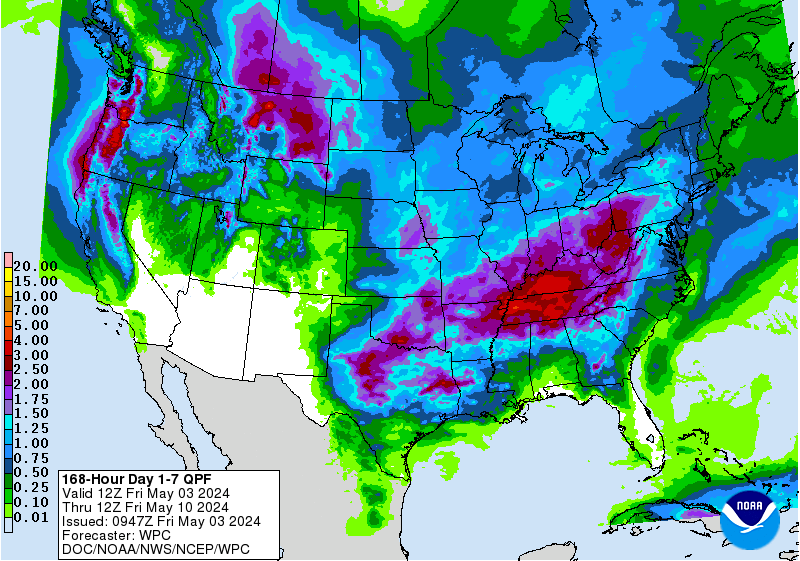


The steering “players”: Eta is moving west again, even southwest eventually. As upper level high pressure builds to the east & upper level troughing increases over the Central U.S. & Gulf of Mexico, Eta will turn more north then northeast before steering current potentially again collapse toward the weekend. Complicated & interesting, maybe a little frustrating not to mention subject to change!

More spaghetti:


Eta technically developed on Oct. 31st but the map below will suffice & shows the Caribbean is a relative “hot bed” for late season/first 10 days of Nov. tropical cyclones:
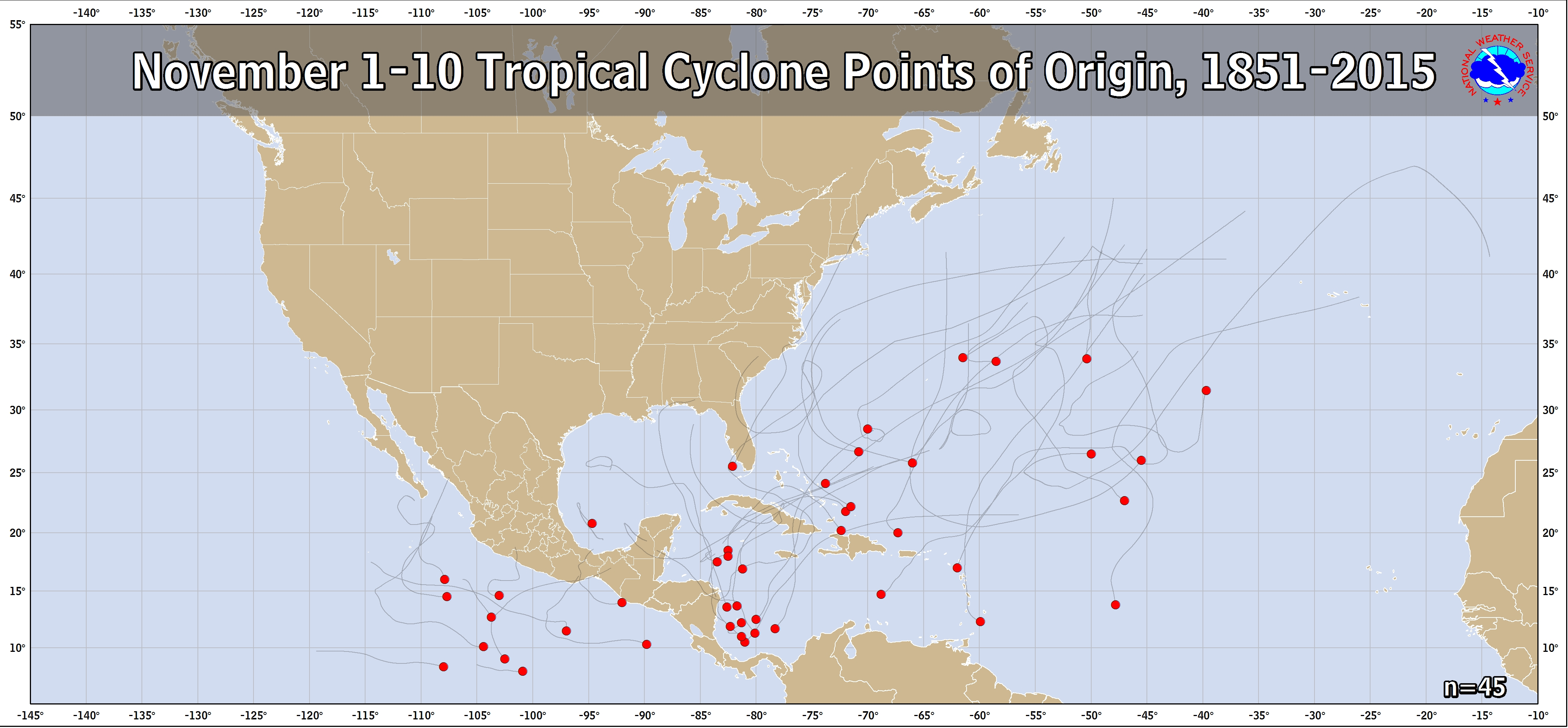
Theta has formed over the E/Northeast Atlantic - the record 29th storm of the season beating the record of 28 in the infamous year of 2005. Theta will stay over the Eastern Atlantic & is no threat to the U.S.

Atlantic Basin wave forecast for 24, 48 & 72 hours respectively:




Elsewhere... Another tropical wave moving into the Caribbean does have some longer range potential for gradual development.




:quality(70)/cloudfront-us-east-1.images.arcpublishing.com/cmg/WW5AJL3ARQUGDQMAQUNSFX4CLE.jpg)
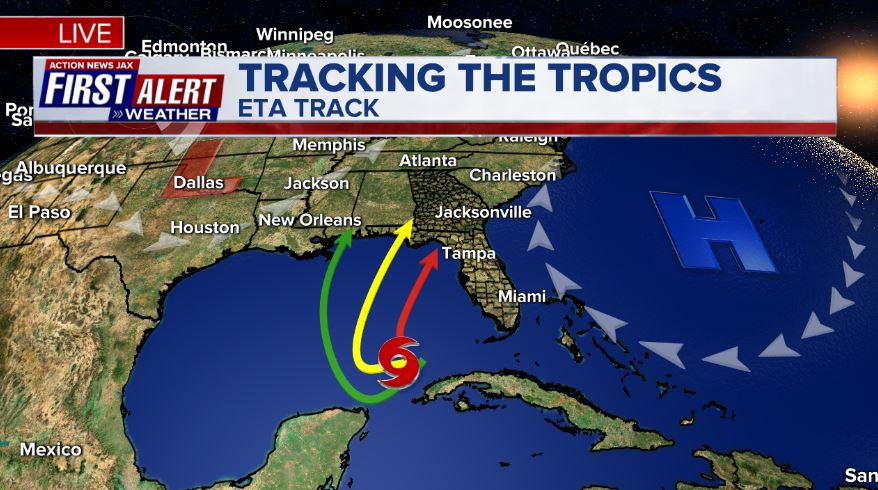
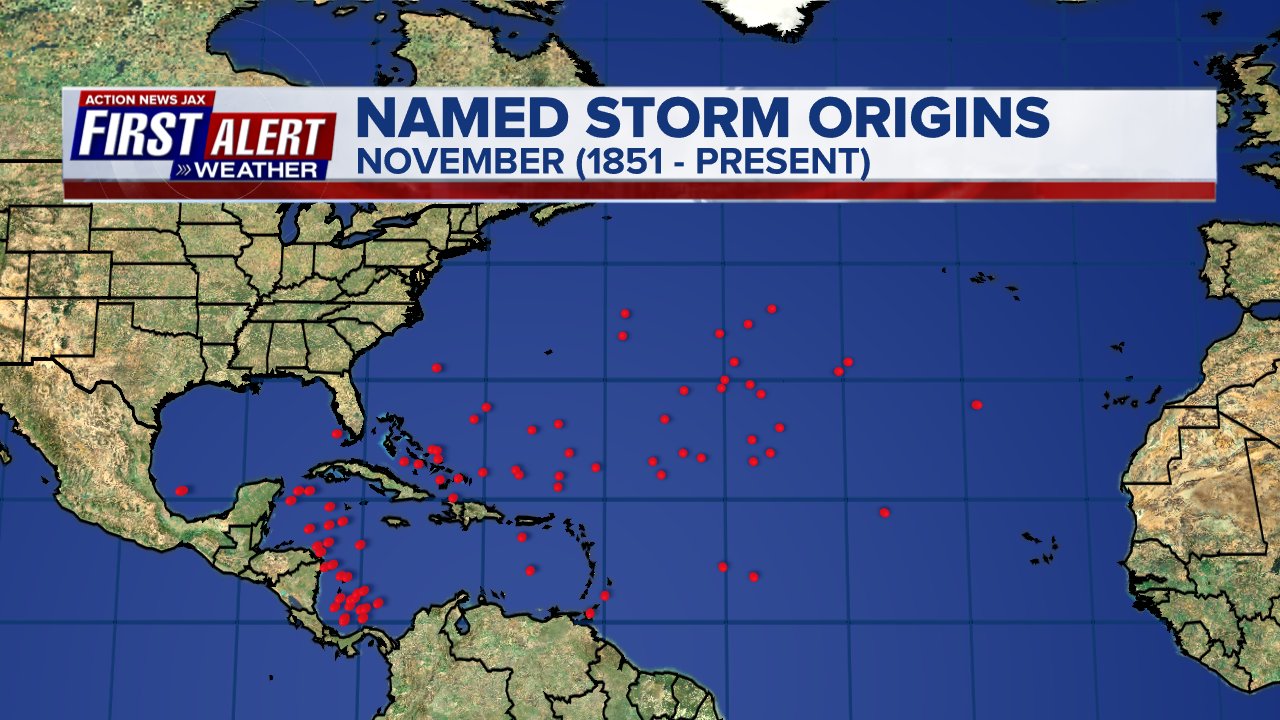
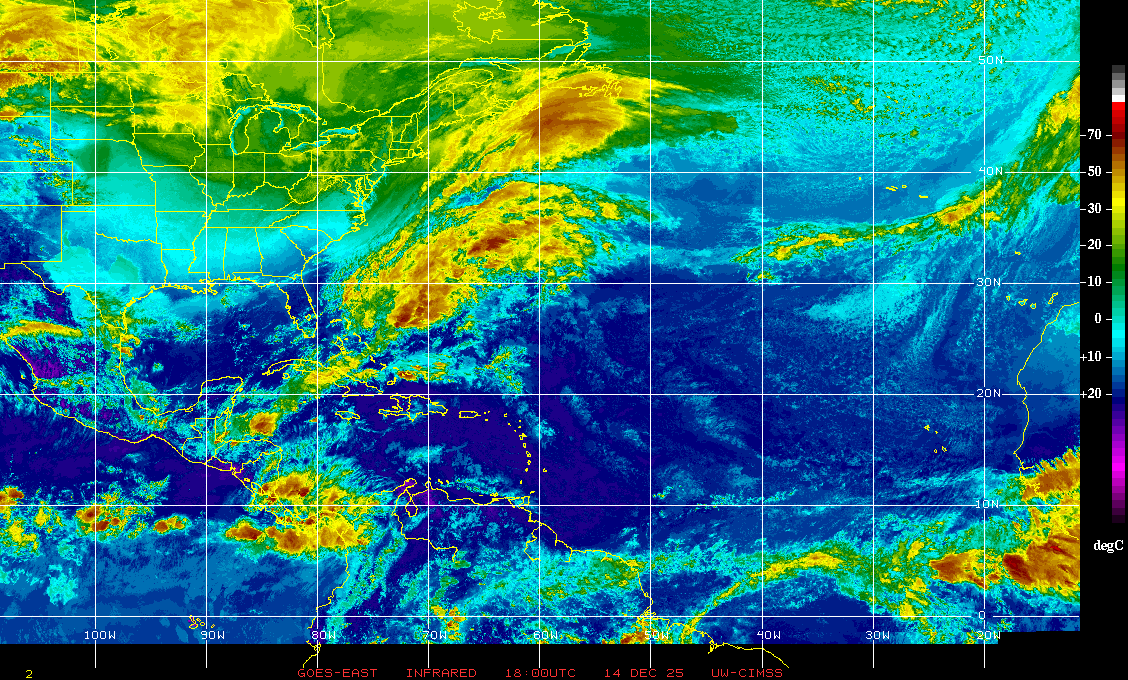

















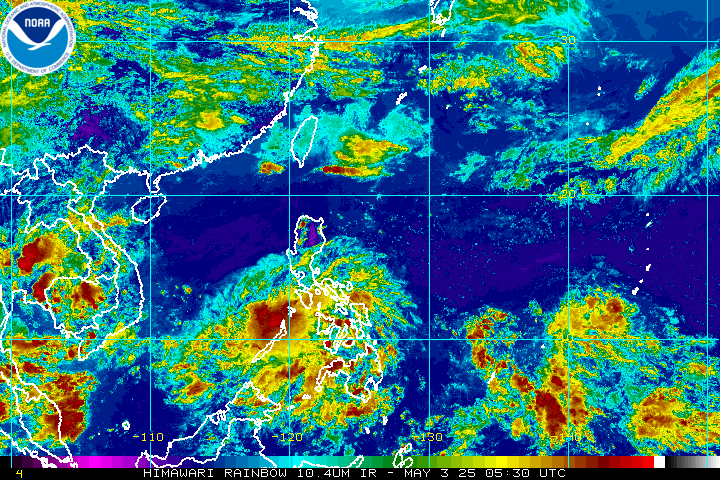


:quality(70)/cloudfront-us-east-1.images.arcpublishing.com/cmg/KH37NGBQ6ZCG3K7JGKOS22ZA7E.png)
:quality(70)/d1hfln2sfez66z.cloudfront.net/04-23-2024/t_8846f6a1613746e2863363cea1df0c34_name_file_960x540_1200_v3_1_.jpg)
:quality(70)/d1hfln2sfez66z.cloudfront.net/04-24-2024/t_d73855398dca4bf5a6e1eca4fedb0fdd_name_file_960x540_1200_v3_1_.jpg)
:quality(70)/cloudfront-us-east-1.images.arcpublishing.com/cmg/2ONNMC3BENET7KURYKMMLU3UP4.jpg)
:quality(70)/d1hfln2sfez66z.cloudfront.net/04-25-2024/t_7ed707ef88514632befd7100c68e5358_name_file_960x540_1200_v3_1_.jpg)